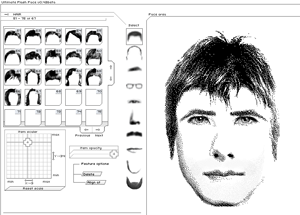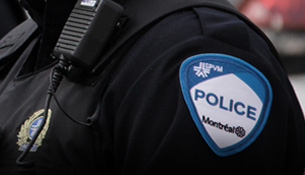Portraitist
 At one point, the Police portraitist drew faces from the memory of victim by hand with a pencil.
At one point, the Police portraitist drew faces from the memory of victim by hand with a pencil.
This was replaced with the "flap chart" technique (using a collection of cards illustrating various parts of the face), which made it possible to reconstruct the face of an attacker.
Since then, powerful computers and software has facilitated this important work. The technician has access to a host of facial details in order to accurately construct a suspect's facial features
A state-of-the-art specialization
The SPVM's first female portraitist, Officer Diane Boudreault, has carried out an average of 30 digital portraits annually since 2004.
Few people in Quebec possess this specialization; in addition to Officer Boudreault, there are only two portraitists from the Sûreté du Québec serving the entire province.
Occupational ABCs
The creation of adigital portrait requires patience and an average of four meticulous work hours. In the first step, the portraitist must make sure that the victim sufficiently observed their attacker to provide an accurate description.
As Officer Boudreault explains, "The tool of the portraitist is the memory of the victim". It is vital to call upon the services of the portraitist as soon as possible after the crime, at the beginning of the investigation, even if only used later on.
Time erases and changes images from the memories of victims and the influences of others can contaminate them as well.
Vulnerable clients
Victims of sexual assaults represent the portraitist's main clients. As the initial meeting will be emotionally challenging for the victim, the portraitist must show empathy and support to help bring out the perpetrator's face from their memories.
The process works in layers. The computer suggests a string of facial images and, through elimination, the portraitist guides the victim until they are sure of the result.
The realism depicted by digital portraits can be disturbing for a victim because it can remind them of the assault that took place.



